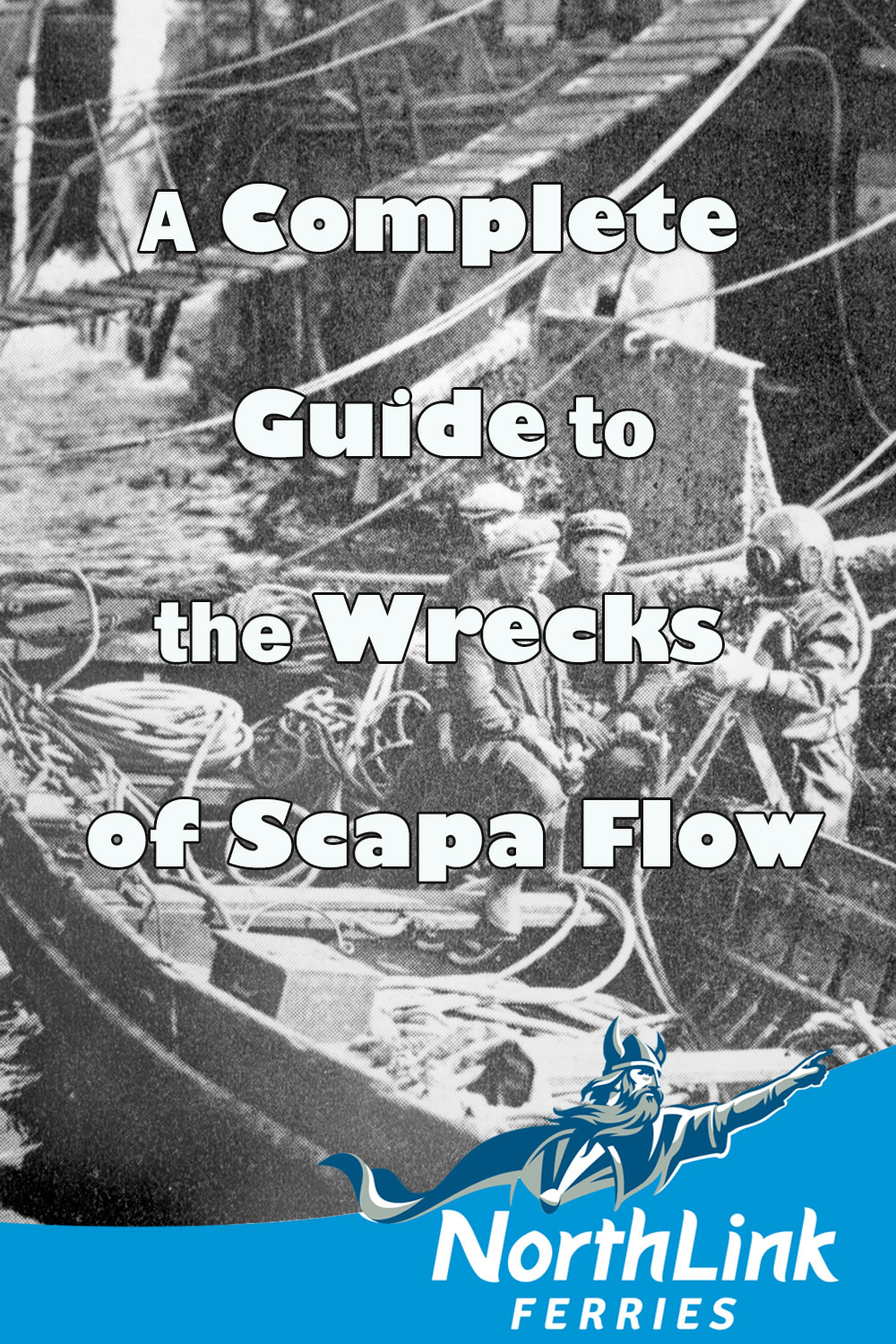A Complete Guide to the Wrecks of Scapa Flow
Scapa Flow was the main naval base for the British Home fleet during both World War 1 and World War 2. It was used because the area featured a large landlocked harbour, and its deep entrances were useful for getting large ships in and out of the bay. It also featured deep water anchorages which were useful for the navy.
The German High Seas Fleet arrived in Scapa Flow on 23rd November 1918. On that day, almost the entire fleets of both Germany and the United Kingdom were anchored at Scapa Flow. It is known as perhaps one of the greatest naval phenomenon on the planet.
During World War 2, Orkney acted as a base for training and repairs for many of the aircraft from aircraft carriers, although it took some time to make the harbour secure for use as a base, in both wars. Orkney was so important to the war effort that there were up to 40,000 men stationed there at the peak of World War 2. To put that in perspective, in 2017, the population was only 22,000.
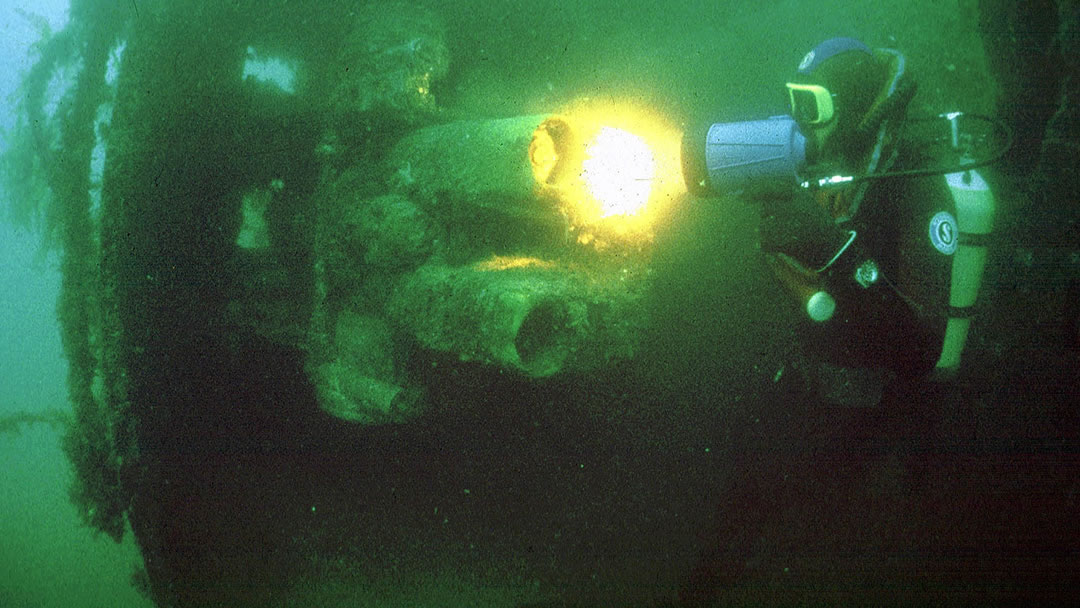
At present day, there are many shipwrecks in Scapa Flow that can explored by divers and several where it is prohibited to dive and explore.
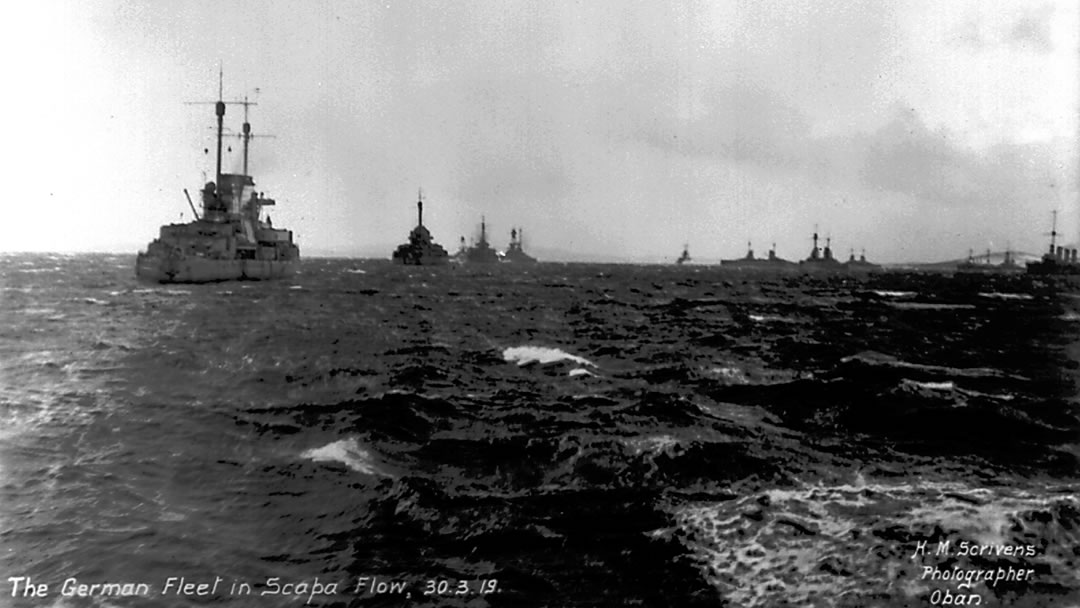
The German High Seas Fleet.
The German High Seas Fleet arrived in Scapa Flow on 23rd November 1918 when 74 German ships were interned there. On that day, almost the entire fleets of both Germany and the United Kingdom were anchored at Scapa Flow, it is known as perhaps one of the greatest naval phenomenon on the planet.
Just 7 months later, nearly all of the ships would sink because of direct orders from the commander in chief, Ludwig von Reuter.
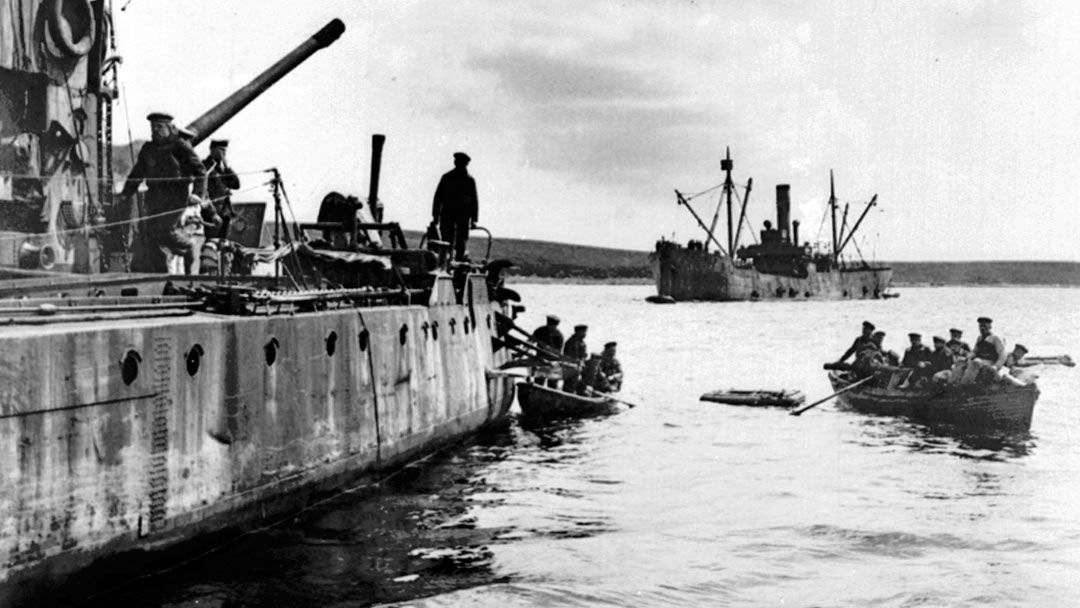
On the 21st June 1919, Ludwig Von Reuter ordered every ship to scuttle under the belief that the British were going to seize the fleet. Some ships were beached but most of the ships in the German fleet sank on that day in 1918; most of the fleet was then salvaged during the 1920’s and 1930’s.
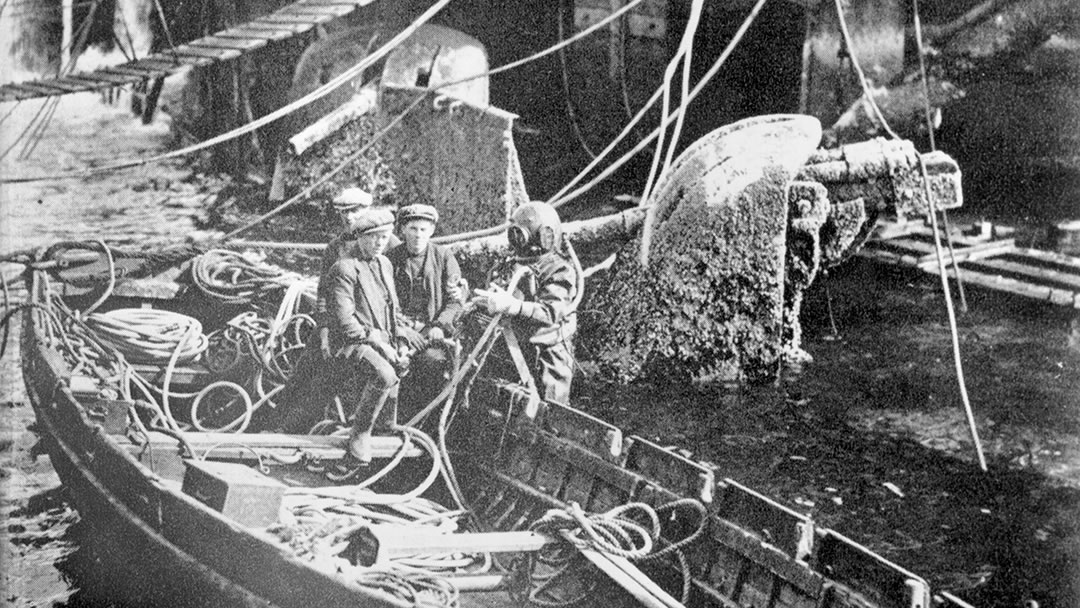
By the year 1945, at the end of World War 2, only 3 battleships had been left behind that divers could visit; these were the König, the Kronprinz Wilhelm and the Markgraf. There are also two large debris sites from the Bayern and the Seydlitz.
There were 5 battle cruisers, 11 battleships, 8 light cruisers and 50 motor torpedo destroyers in the fleet; today, only four battle cruisers and three battleships still lay on the seabed at Scapa Flow between 45 and 12 metres below the surface and present distinct diving experiences that you can’t get in many other places in the world. The German fleet is protected under the ‘Protection of Wrecks Act, 1973’ so they can’t be tampered with in any way.
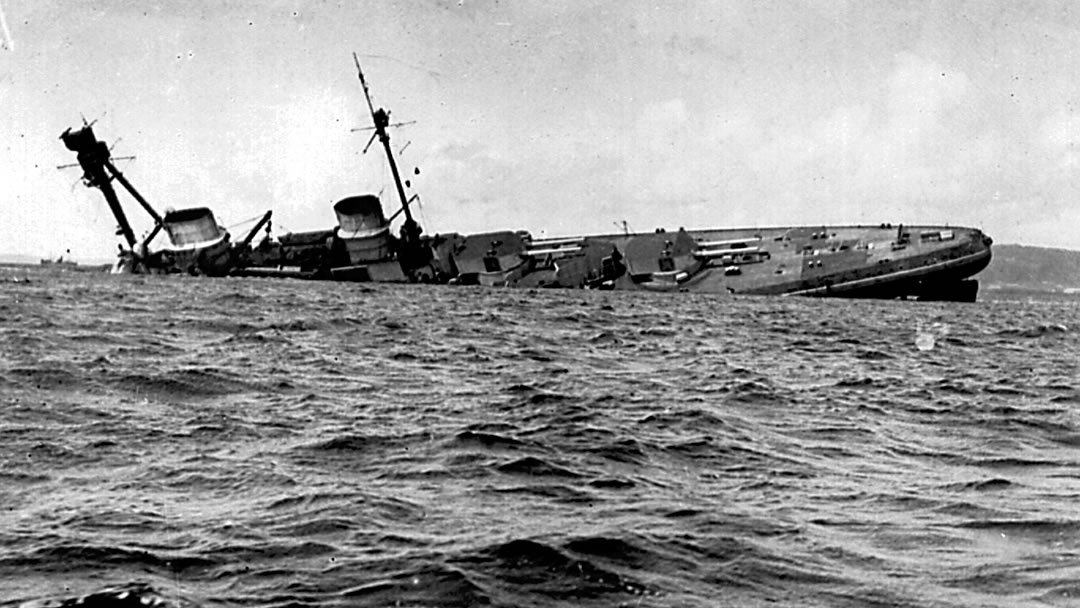
Battle cruisers and Battleships
The 5 German battle cruisers that sank on that day were:
- Derfflinger (raised by Metal Industries 1939)
- Hindenburg (raised by Cox and Danks 1930)
- Moltke (raised by Cox and Danks 1927)
- Seydlitz (raised by Cox and Danks 1928)
- Von der Tann (raised by Cox and Danks 1930)
The 11 German battleships that sunk were:
- Baden (beached and saved)
- Bayern (raised by Metal Industries 1933)
- Friedrich der Grosse (raised by Metal Industries, the bell is on display in Stromness Museum)
- Grosser Kurfürst (raised by Metal Industries, 1937)
- Kaiser (raised by Cox and Danks, 1929)
- Kaiserin (raised by Metal Industries, 1936)
- Prinzregent Luitpold (raised by Cox and Danks, 1931)
- König Albert (raised by Metal Industries, 1935)
- König (salvage abandoned, still at Scapa Flow)
- Kronprinz Wilhelm (salvage abandoned, still at Scapa Flow)
- Markgraf (salvage abandoned, still at Scapa Flow)
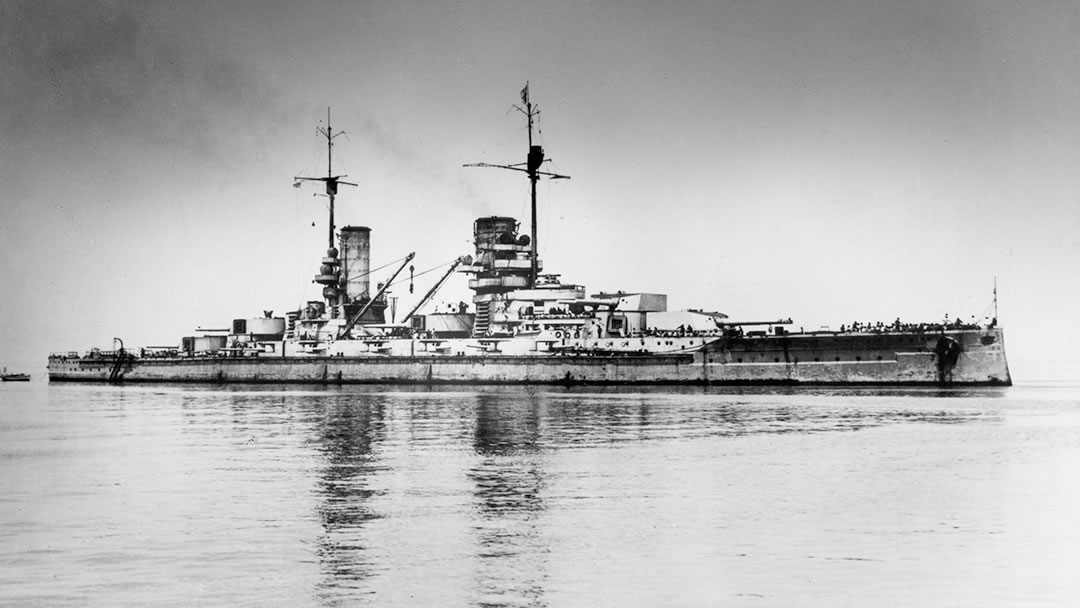
The König, Markgraf and Kronprinz Wilhelm were all König class battleships, because of this; all 3 ships are almost identical. The König (pictured above) sank at 14:00 on 21st June 1917. It’s in a state of deterioration due to a salvaging company blowing its hull apart in the 1960’s and 1970’s as part of a search for scrap metals. There are large amounts of marine life growing on the decaying flat sections of the Hull.
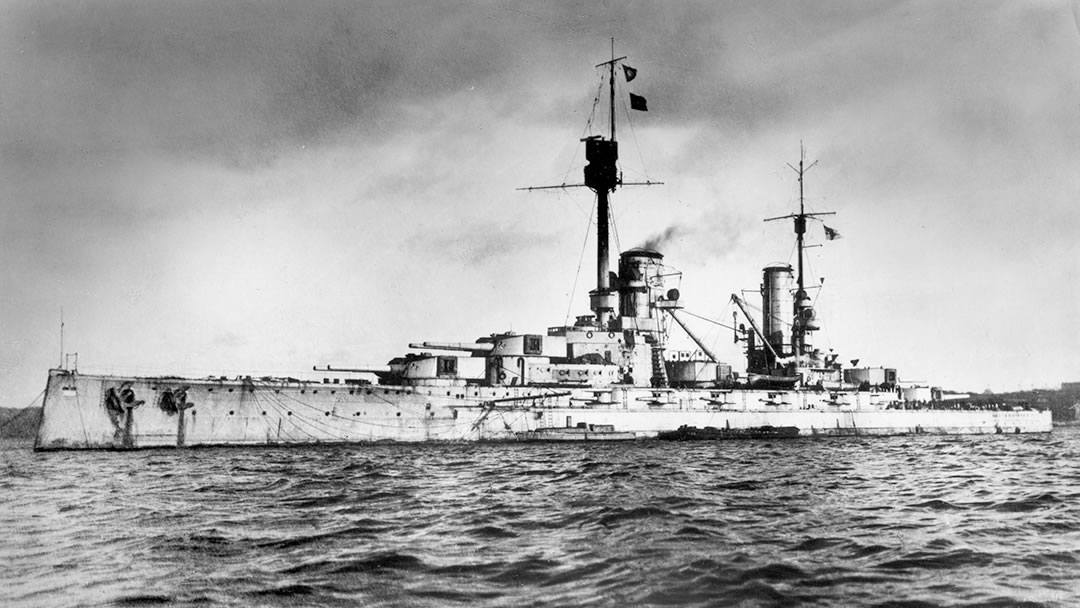
The Markgraf lies on its port side with its starboard underside still exposed. The grave of the Markgraf’s captain, Lt-Cdr Walther Schumann, can be found at the Lyness Naval Cemetery.
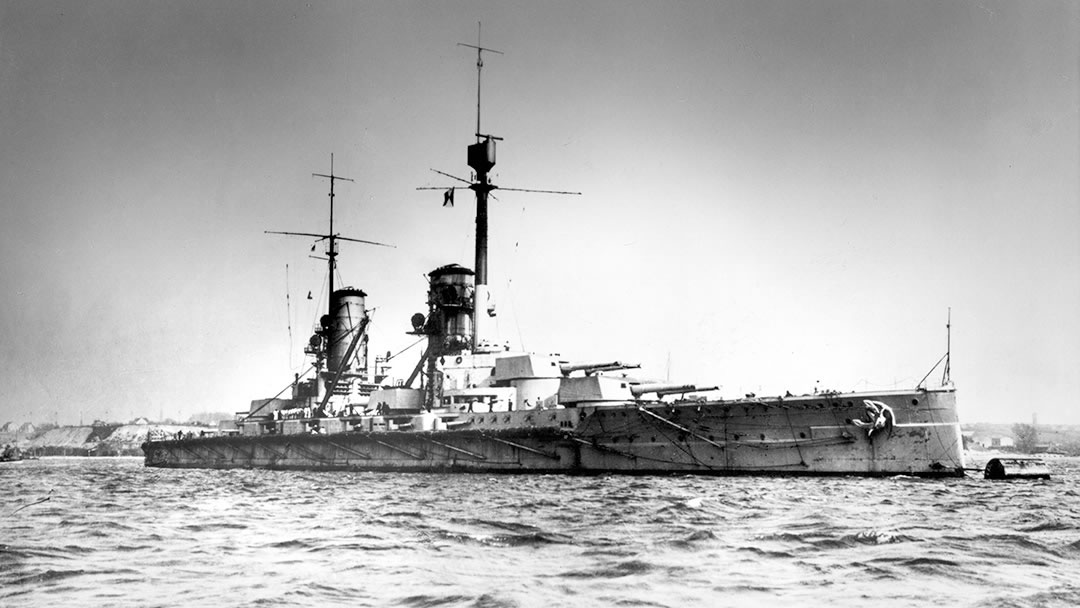
The Kronprinz Wilhelm was the last of the König class battleships to be built, and it is also the most damaged of the three ships which weren’t salvaged. Like the König, the Kronprinz Wilhelm has lots of marine life growing on it (including plumose anemones; starfish; sea urchins; shrimps and crabs)
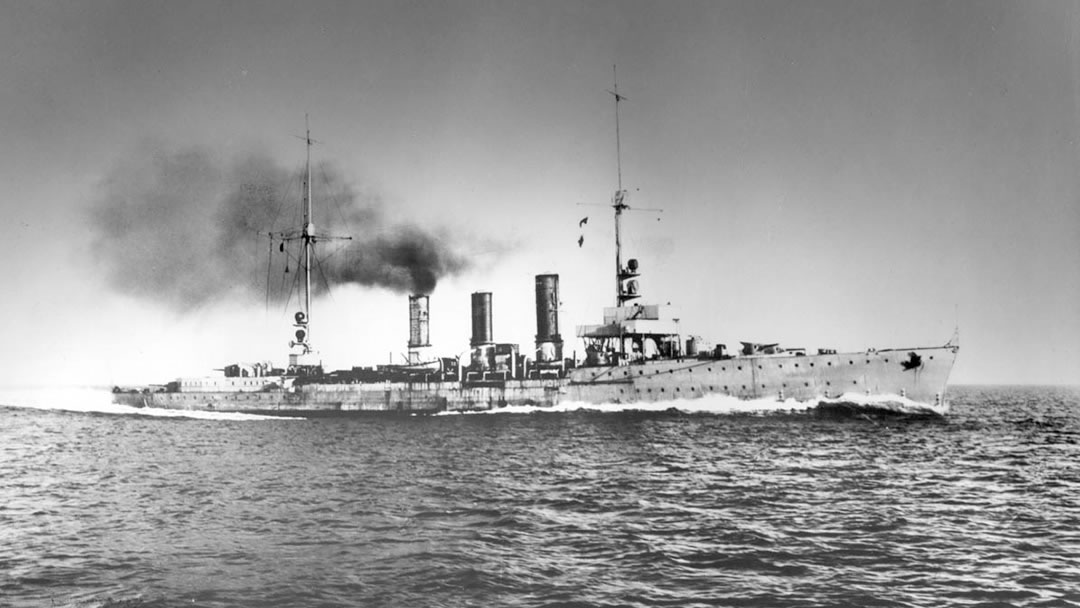
Light cruisers
23rd November 1918, when the German battle fleet entered Scapa Flow, there were eight light cruisers included in the fleet for internment. When the German fleet was scuttled, the light cruisers were some of the last ships to sink that day.
If you would like to dive and visit the German Fleet, you need to get a diving permit from the Orkney Islands Council Harbours department. The salvaging company that owns the Karlsruhe II (pictured above) allows diving on the ship, but divers are prohibited from taking any salvage from the wreck of the ship.
The light cruisers in the German fleet are:
- Bremse (saved and beached by the Royal Navy)
- Emden II (saved and beached by the Royal Navy)
- Frankfurt (saved and beached by the Royal Navy)
- Nürnberg II (saved and beached by the Royal Navy)
- Brummer (sunk to the seabed and belongs to Orkney Islands Council)
- Cöln II (sunk to the seabed and belongs to Orkney Islands Council; the bell is on display at the Scapa Flow Visitor Centre and Museum in Lyness on the island of Hoy)
- Dresden II (pictured below – sunk to the seabed and belongs to Orkney Islands Council)
- Karlsruhe II (sunk to the seabed and privately owned by a salvage company)
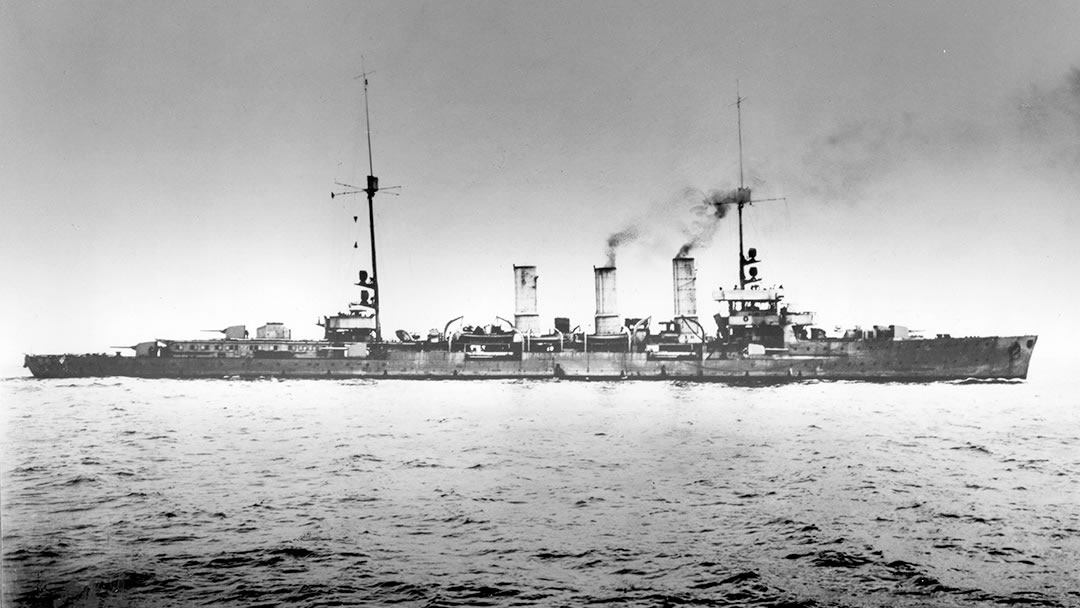
Motor Torpedo Boats (destroyers)
In the German fleet, there were 55 destroyers from 5 flotillas; only 5 of the torpedo boats are divable to this day. There wasn’t much to distinguish the German destroyers and large torpedo boats back in World War 1; in fact the term ‘destroyer’ only came into effect in 1914/1915 when the B97 class was built. Before then, torpedo boats and destroyers weren’t named and were instead identified using a number and letter signifying the naval yard that it was built in.
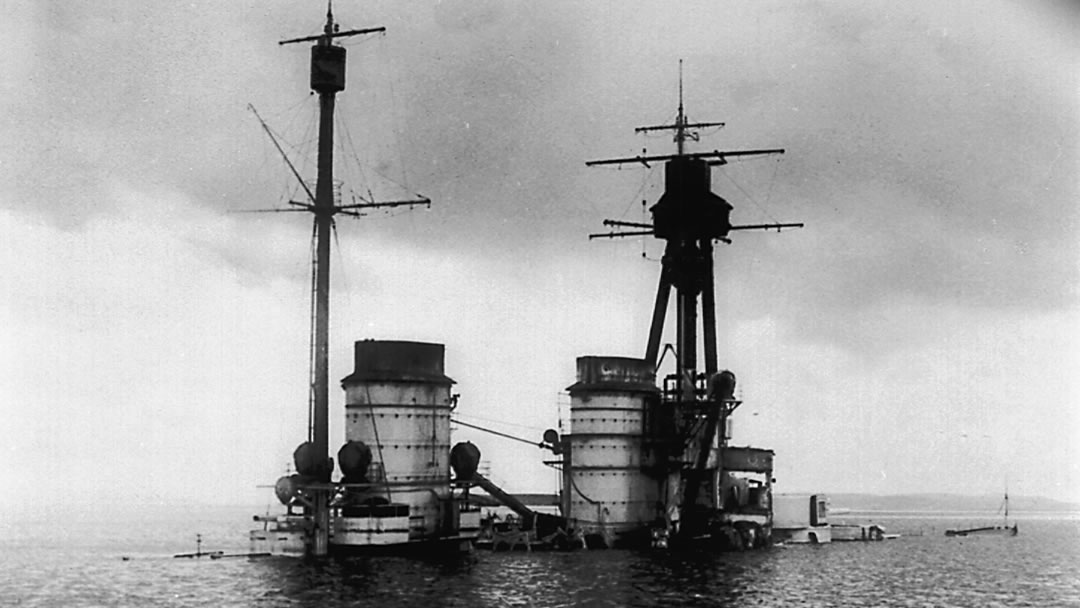
Other Wrecks in Scapa Flow
- The Aorangi sunk as a block ship in 1915. It was raised again in August 1920 in an attempt to clear the channel for navigable shipping after 3 men had died because their ship hit one of the sunken block ships in the water.
- Coal Barge sunk during World War 1. It was used during the war to fuel the home fleet.
- Concrete Barge, little is known but it is potentially French. It sunk after being abandoned.
- The HMS Roedean was launched in 1897 as the TSS Roebuck, it ferried between Weymouth and the Channel Islands for years. It was commandeered by the British admiralty in 1914, renamed the Roedean, and converted into a minesweeper where it then sunk after being hit with a mine.
- The MV James Barrie started sinking on 27th March 1969, it was abandoned on the 29th March 1969 but floated off the rocks and went adrift in the Pentland Firth. It sunk after the ice that stopped the water from seeping in melted and water filled up the hold. It is still intact under the water.
- MV Mara used to be a fishery research vessel; it then became a live-aboard dive boat where it was ignored and abandoned because of a lack of business. Severe deterioration occurred after several winter storms and it began to sink. It eventually sank in central gutter in 1995 after being moved.
- The Prudentia was a fleet auxiliary tanker to supply the British naval fleet during World War 1. It was built in 1889 and it sunk when it struck the SS Hermioine. It lies on port side and is still relatively intact. The wreckage leaks oil, so the hull has been covered by sand and cement bags in order to prevent any further leaks.
- Rose Valley was originally called the Sylt when it was built in 1918. It was used as a fishing boat until it was requisitioned by the admiralty to be used as a supply boat for transporting torpedoes during World War 2. It was involved in a collision and quickly sank on the 16th December 1943.
- The Strathgarry was built in 1906. It was originally owned by the Aberdeen trawling and fishing company until being requisitioned by the British admiralty during World War 1. There was controversy over the sinking of the ship because it was possibly struck by the HMS Herald.
- UB116 was a German type UB III submarine which sunk on 28th October 1918 as it approached Scapa Flow through Hoxa sound under the command of Kapitänleutant Hans-Joachim Ensmann. UB116 was destroyed after mines were detonated electronically from the shore after it got close to the surface before submerging below the water again. The wreckage of the submarine was found in the next morning by two trawlers. A destroyer in the area bombed the submarine again with depth charges. When divers entered the vessel, they found only bodies in officer uniforms and several suitcases full of civilian clothing; it is speculated that the crew would have surrendered at the end of the war. In 1975, the navy removed the crew’s remains and attached charges to the torpedoes inside the submarine. UB116 was then blown up for the third and final time.

World War II Wrecks
Many of the German wrecks in Scapa Flow are from 1919, but there is a sunken World War 2 ship, called the F2 (pictured above), near the Scapa Flow Visitor Centre and Museum in Lyness on the island of Hoy. The F2 was built in 1936; it was converted into a torpedo recovery boat at the beginning of the war and was captured not long after. It was eventually sunk after the war had ended in 1946.
According to a local story, a group of salvagers removed parts of the ship, including an important piece of brass metal which made the ship sink when it was removed. It was purchased in 1967 by Metrec engineering to be salvaged. The mid to aft sections of the ship have been completely destroyed in the process of a search for metals from the wreckage. It is said to not be a particularly difficult dive to compete.
The YC21 is connected to the F2 by a 30m line. It was a salvage barge which was used to salvage parts from the F2; the 20mm Gun from the F2 can still be found on the wreckage of the YC21, because it sank whilst salvaging parts from the F2.
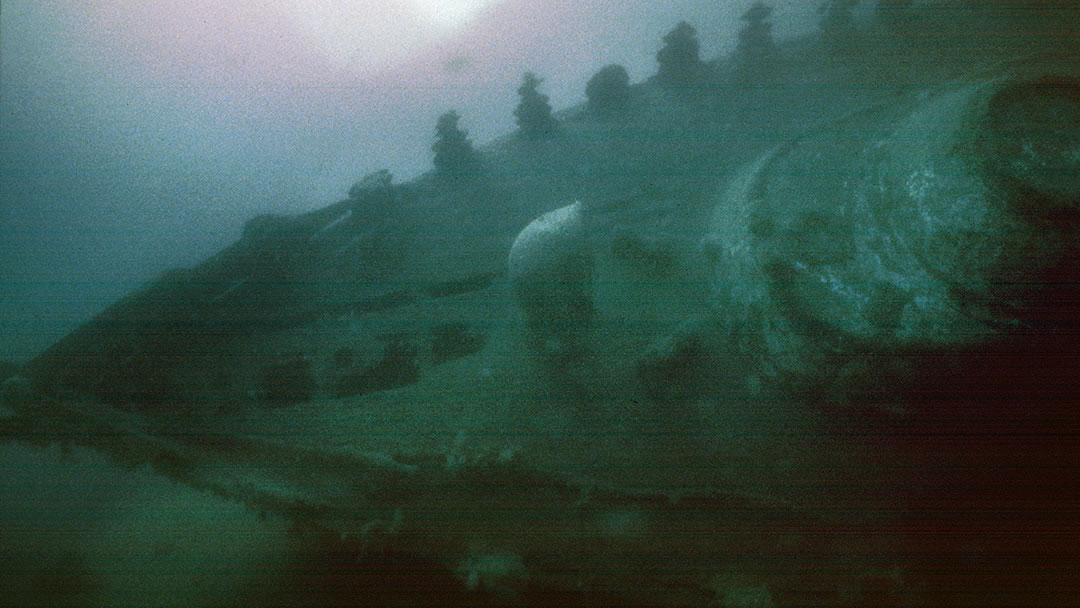
War Graves
The Orkney Islands are home to three naval war graves. The HMS Royal Oak is the most well-known of the three. Of the other two war graves, one is located outside of Scapa Flow; the other is north of the oil terminal on Flotta. These ships are the HMS Hampshire and the HMS Vanguard. War graves are protected under the ‘Protection of Military Remains Act 1986’, which means they cannot be disturbed and divers are prohibited from getting too close to them.
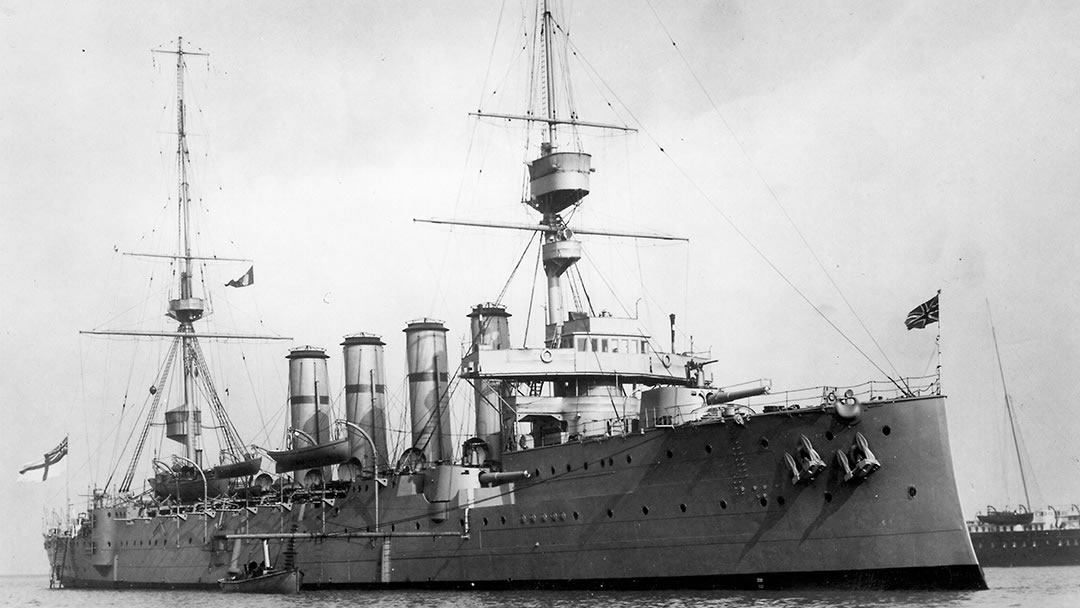
The HMS Hampshire is not located in Scapa Flow; it is located just of Marwick Head along the west coast of the mainland. The minister of war during World War 1, Field Marshall Lord Kitchener, and his staff were sent to Archangel, Russia to help set up the defences there. He was advised to not take the western route out of Scapa Flow because a German submarine (U-75) had recently been spotted in the area and had placed a number of mines. HMS Hampshire still took the western route on the 5th June 1916. It is presumed that the HMS Hampshire was blown up by a mine, though there are other conspiracy theories as to the reasons behind the sinking. Of the 655 officers and men on board, only 12 men survived and made it to shore that day.
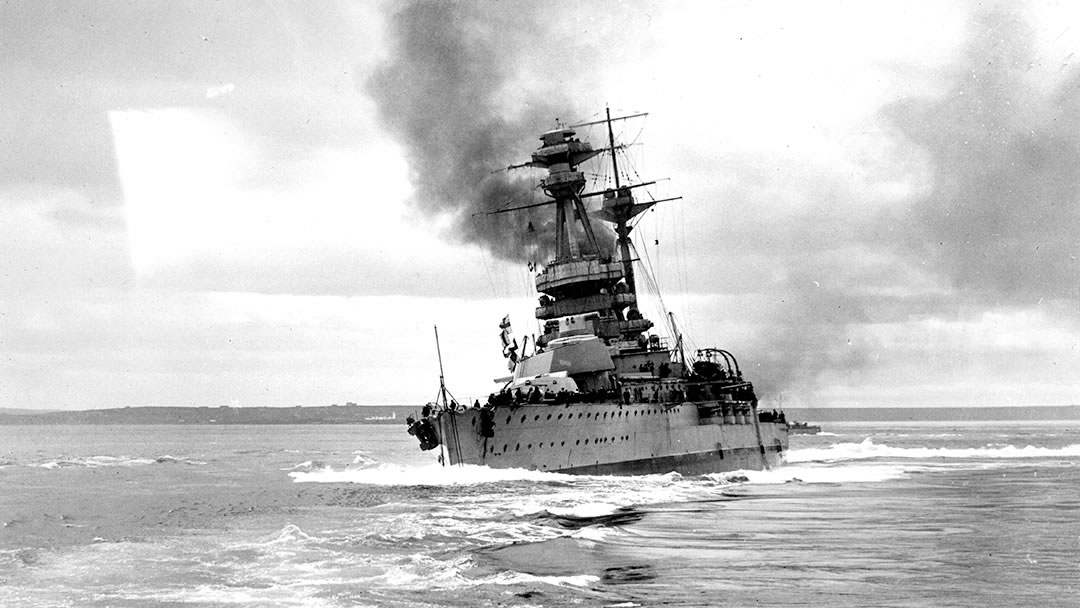
The HMS Royal Oak was commissioned in 1916 and built at the naval dockyards in Plymouth. It sank in World War 2 due to an attack on the ship by the Germans in the early hours of October 14th 1939; just 6 weeks after the war began. The German U-boat U47 came through Holm Sound torpedoed the HMS Royal Oak which was anchored in Scapa Flow, because it was no longer suited for front-line duty, killing 835 crew members who were on board at the time.
As a direct response to this, the Churchill Barriers were built in order to further protect Scapa Flow from incoming threats from the east. They also helped to connect several of the islands together with a road, allowing for easy travel between them. The wreck of the HMS Royal Oak became an environmental risk because it was leaking large amounts of fuel oil, the Royal Navy responded by removing the oil and cleaning up the area.
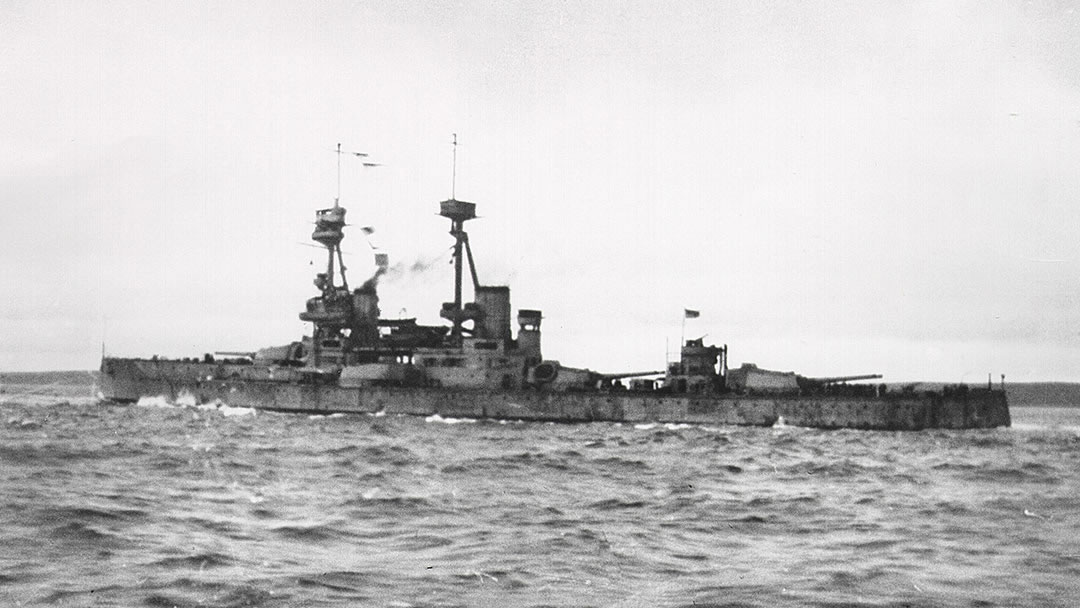
The HMS Vanguard was a ship that sank in World War 1 due to an accidental explosion, killing over 700 people. The HMS Vanguard was one of the first of the new style of Dreadnought battleships (St. Vincent Class). It was a fast ship for its time and size, being able to reach speeds of over 20 knots (23mph). The ship blew up on the 9th July 1917 after being out on an exercise during the day. Several of the officers had left the ship for the night in order to attend a concert on the HMS Royal Oak. Just before midnight, the ship was hit with a massive explosion which ripped through the ammunition magazine. 98 men survived out of the 804 crew members, 95 of those men weren’t on board the ship at the time of the explosion.
Rumours of sabotage started after a German letter, bible and a photo of a German woman were discovered in the wreckage. It was also discovered that the civilian ordinance fitter, who had left the ship right before it blew up, was the same man who had been on another ship, the HMS Natal, when it blew up under the same circumstances just 2 years before. The ship was salvaged extensively and its remains are broken up in 34 metres of water.
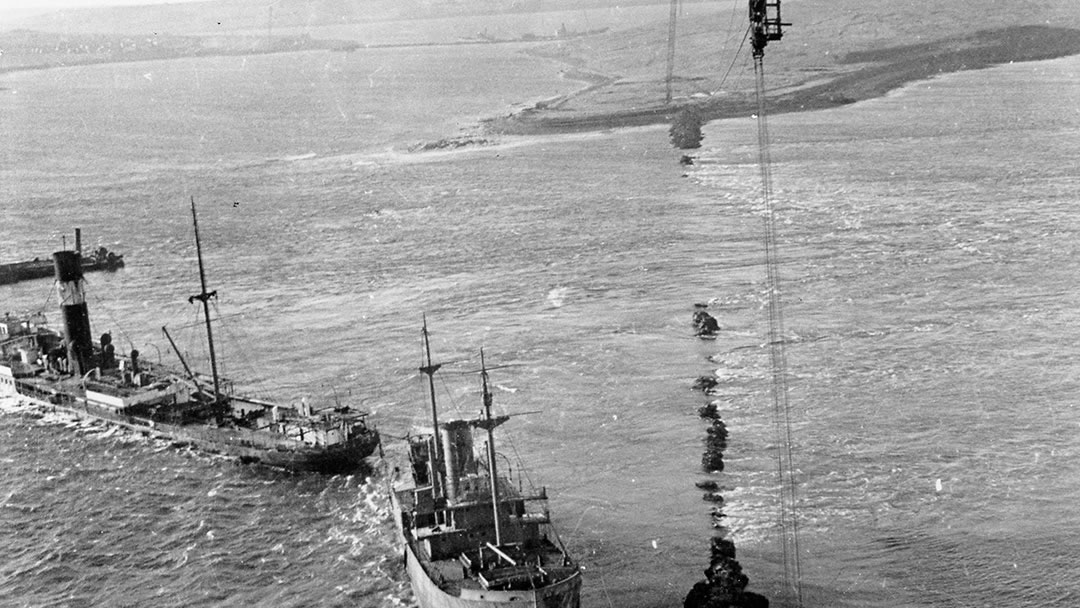
The Barrier Block Ships
The Barrier block ships are ships that were purposely sunk along the sea floor at the entrances to Scapa Flow in World War 1 and World War 2 as a temporary solution to prevent the German Ships or submarines from entering Scapa Flow.
On average, the depth of the barrier block ships along the Churchill Barriers is 8m on the seaward side and 12-20m on the Scapa Flow side. Many of the block ships aren’t worth the effort of diving to see them, because they are now well broken up, whether that is through time or because of salvaging; several others have been completely obscured under the sea floor.
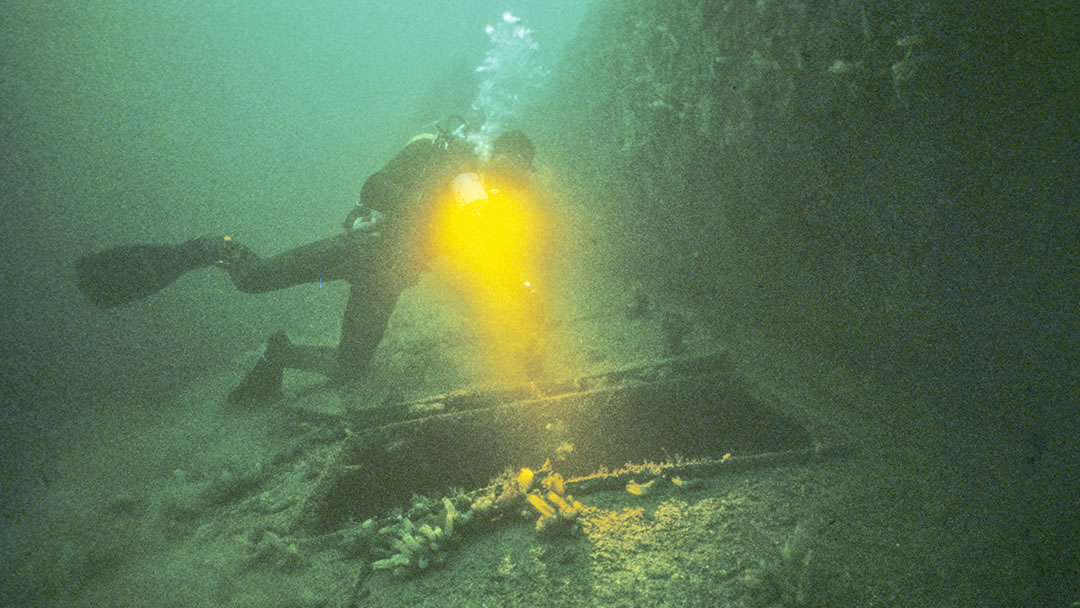
Churchill Barrier I
Most of the diving on Barrier I is done on its west side. There are several sunken block ships located here from both world wars.
World War 1 block ships
- The Aorangi was built in Glasgow in 1883 and it was registered in New Zealand. It was chartered by the RAN in August 1914 for use as a supply ship where it continued to be manned by a civilian crew.
The ship took part in operations against German colonies in the pacific until it was returned to its owners in May 1915; it was then given to the British admiralty where it was sunk as a block ship four months later at the Scapa Flow naval base September 1915.
The Aorangi was raised in August 1920 but it broke its moorings and floated out to sea, where the remains now rest near the holm church yard at Canniesile. - The Minieh was built in Glasgow in 1876 and it was sunk on 27th February 1915. It is the deepest of all of the block ships in the eastern barriers. At some point, the ship broke its back and is practically folding in on itself over time. It is clearly broken up and a lot of the lower parts are covered with sand. The Minieh is said to be the most complicated dive of all of the barrier wrecks.
- The Numidian was built in Glasgow in 1891 and it was sunk on Barrier I on 30th December 1914. The Numidian is the most northerly block ship. After World War 1, it was pulled parallel to the shore in 1919 to allow for safer boat traffic.
It was one of the first ships to be scrapped after World War 1 because it was salvaged in 1924. Because of this, there are very few recognisable parts of the ship left. It is said to not be a particularly challenging dive, but it is better to have some experience. - The Thames ship was built in Glasgow in 1887 and registered in Grangemouth. It was sunk on 7th January 1915 and has been extensively salvaged (stern and top superstructure removed) in the years after the war ended. It is currently lying parallel to the barrier.
To dive here, for safety, it is preferable that you have some wreck diving experience.
World War 2 Blockships
- The Busk was built in North Shields in 1906 and it was registered at Whitehaven in Cumbria. It was sunk on the 17th February 1940. While in use as a block ship, it broke up during a gale in the first winter. The hull was then removed from the ship; in 2019, very little of the ship remains.
- Gambhria was built in Sunderland in 1910 and was sunk on the 8th December 1939. The ship was then salvaged and re-floated in 1943 where it was used as an ASDIC target ship in Liverpool Bay. The ship eventually sunk off Llandudno.
- The Lake Neufchatel Royal Navy Special Service vessel was built in Sunderland in 1907; it was sunk on 21st October 1939. It was salvaged by Metal Industries in 1948, so very little of it can be found.
- Redstone was a single screw steamer built in West Hartlepool in 1918 and registered in London. It sunk on 2nd May 1940. It was removed and scrapped by metal industries.
- The Soriano was built in Michigan. It was registered in Montevideo, Uruguay and it was sunk on 15th March 1939 after being acquired by the British Admiralty. It was salvaged and removed by metal industries after the war.
- Tabarka was a single screw steamer built in Rotterdam in 1909 and registered in Rouen. It was seized by the British admiralty near Falmouth in 1940 and they sunk it on 23rd March 1941 for use as a block ship. It was re-floated in 1944 where it was moved and sunk in Burra Sound.
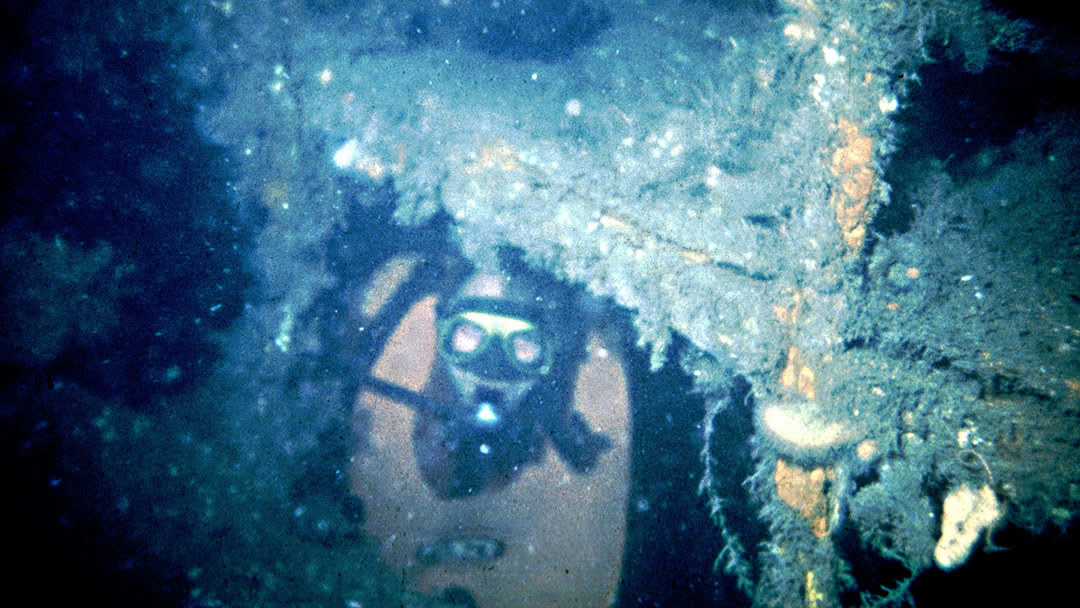
Churchill Barrier II
Barrier II is the most popular barrier for divers, and a few of the ships are suitable for beginner divers as well, partly down to the fact that it has shore access directly to the blockships.
World War 1 Block ships
- Almeria was built in Sunderland and was sunk on 20th February 1915. It was scrapped by Metal industries and any remains of this ship are now lost below the sand.
- Argyll was built and registered in Hull where it was then sunk on 17th September 1914. While sinking, it quickly broke in two; the large boiler can be seen at the southern edge on the seaward side of the barrier. The rest of the ship was salvaged.
- Elton was built and registered in west Hartlepool in 1880. The ship was sunk on 3rd October 1914. By 1915, its back was broken and it was stuck upside down and then scrapped extensively; only the engines and some hull plates remain.
- Reinfeld was built in Newcastle in 1893 and registered in Hamburg. It was sunk on 2nd October 1914. It is the furthest east of any block ships. It was scrapped by Metal Industries and its remains are below the sea floor.
- Teeswood was built in 1882 and sunk on 19th September 1914. It drifted off position whilst being sunk and ended up adjacent to the northern shore, so it was of no use as a block ship. The stern of the ship is close to the northern corner of Barrier II; it was scrapped by East Coast Salvage Company in 1924.
- Rosewood was built in 1889 and was sunk on 18th September 1914. The navy then tried to blow the bottom out, albeit unsuccessfully. It drifted into the sound on an incoming tide before sinking. Rosewood was mostly scrapped on site by several different companies and the island inhabitants. Whatever is left of the ship rests on a silty seabed in 8m of water.
The boilers and a lot of the stern section are still together and its hull still stands up. The area is well known for its fish, so divers need to be careful of there potentially being discarded fishing wires to look out for; wreck diving experience is recommended to safely explore the ship.
World War 2 Block ships
- AC6 Barge was used by Metal Industries in the war for Admiralty fleet work and repairs. It had to be sunk on 4th August 1941 because of a lack of block ships ready to be sunk.
- Lycia was built in Port Glasgow in 1924. It was sunk on 19th February 1941. The Lycia is the most distinctive of the block ship wrecks because the massive engine block stands above the surface at the shore. It was scrapped at the same place it sunk by Metal Industries.
- Cape Ortegal was built in Glasgow in 1911. It was sunk 5 days after the start of the Second World War. It didn’t last long as a block ship because it wasn’t ballasted when it was sunk, so it quickly rolled over and broke up during the first of the winter winds.
It is possible to swim through and explore the stern section and upturned propeller; and is said to not be a difficult ship to explore. - Emerald Wings was built in Cherbourg in 1920; it was sunk on 13th July 1940. This also is a relatively easy block ship to dive.
- F/C Pontoon sunk on 22nd May 1941. This ship has a distinctive rectangular structure which sites above the tide at any level. The huge internal boiler on the ship is still intact.
- The Ilsenstein was built in Kiel in 1889 and registered in Bremen. It was acquired by the admiralty and was sunk to replace the useless Cape Ortegal on 18th February 1940. It was largely scrapped on site by Metal Industries because Barrier II, which was near completion, would have made the block ship redundant. It has the largest remains of any of the block ships in the area and it has distinctive bows and railings.
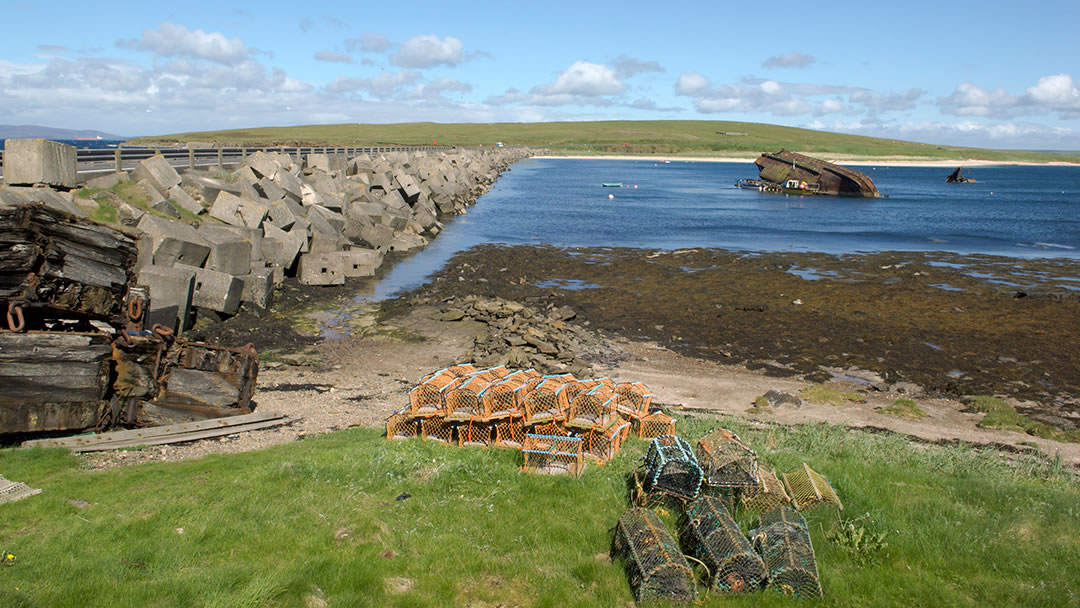
Churchill Barrier III
Barrier III is located on a steep bend between two islands.
World War 1 Block ships
- Clio II was a ship built in Hartlepool in 1889; it sunk on 27th February 1915. The firing circuit failed and Clio II swept the channel and sunk out to the eastwards where it was then deemed to be no use as a block ship.
- The Reginald was built in Glasgow in 1878 and was sunk on 15th September 1915. The stern section of the ship, which lies on its port side is said to be one of the most distinctive views of any of the block ships.
- Gartmore was built in South Shields in 1880. The ship was requisitioned by the Admiralty and sunk on 14th September 1915. It was un-ballasted so it quickly broke in two. The propeller, prop shaft and crankshaft can all be seen in just 3m of water.
- Lapland was built in Dundee in 1890. It was then registered in Liverpool. It sunk on 16th September 1915. It was un-ballasted when it sank, so it very quickly broke its back in the deeper areas of the water, but it stayed in place.
World War 2 block ships
- The Empire Seaman was built in Lubek. It was seized by the British Navy in the Bay of Biscay as it tried to reach Germany. It was sunk for use as a block ship on 30th June 1940. It can be seen at all tides on the Scapa Flow side of Barrier III. The bows, stern and superstructure were removed by Metal Industries when it was scrapped. The hull and lower sections are all somewhat intact, so it allows for easy access for divers to parts of the ship.
- The Martis is the largest of the block ships that was sunk at east weddel sound. It was built in South Shields in 1894 and sunk on 14th June 1940. The Martis is more visible than the Empire Seaman, making it a more popular diving attraction. It helps that the Martis is also the closest to the northern entry point into the Scapa side of the barrier. The bows, stern and superstructure were all removed by metal industries when the barrier was being constructed as the ship wouldn’t be needed after construction on the barriers had finished.
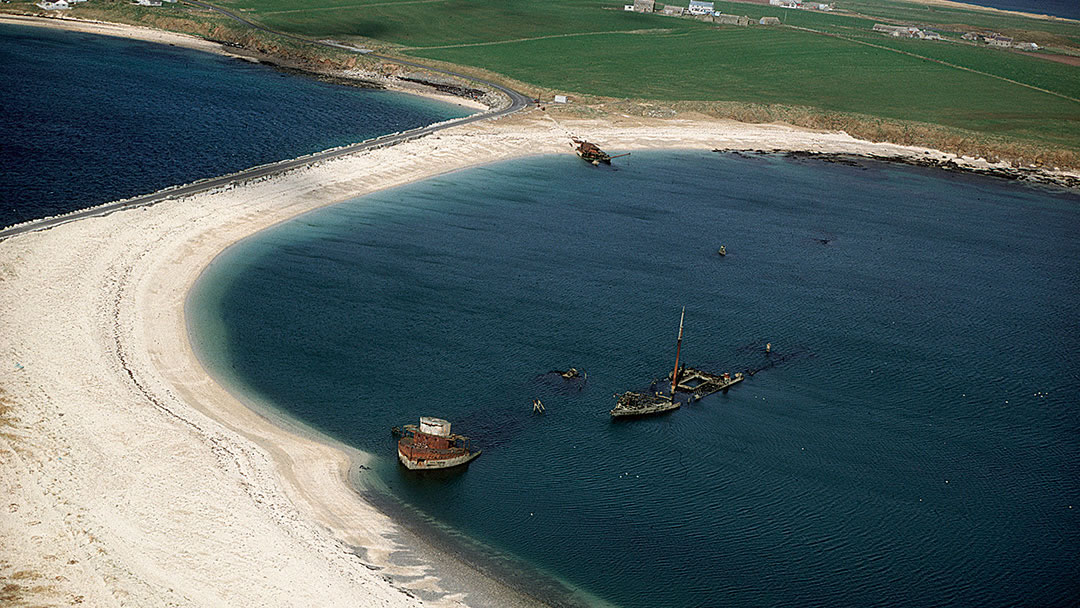
Churchill Barrier IV
No diving usually takes place near Barrier IV, since the construction of the barrier has changed the area’s ecosystem in the 75 years since its construction. Sand has built up on the East side of the barrier and the block ships here are all being hidden under the beach.
World War 1 Block ships
- Clio I was built in Hartlepool in 1889, it sunk on 29th April 1914. The Clio I stood upright and served its purpose as a block ship until being scrapped by Metal Industries before the construction of Barrier IV. It can be confused with the nearly identical Clio II, which sunk 10 months later.
- Lorne was a single screw steamer built in Hull in 1873 and registered in Southampton. It sunk on 17th September 1915; it was concrete ballasted in order to keep it in position. The Lorne was partially scrapped, also being blown apart by explosives.
- Pontos was built in Glasgow in 1891 and registered in Andros, Greece. It sunk on 30th November 1914 at the southern parts of the channel. It wasted no time in breaking its back and was subsequently scrapped over the coming years. The remains have been buried over time under the sand on the eastern side of the barrier.
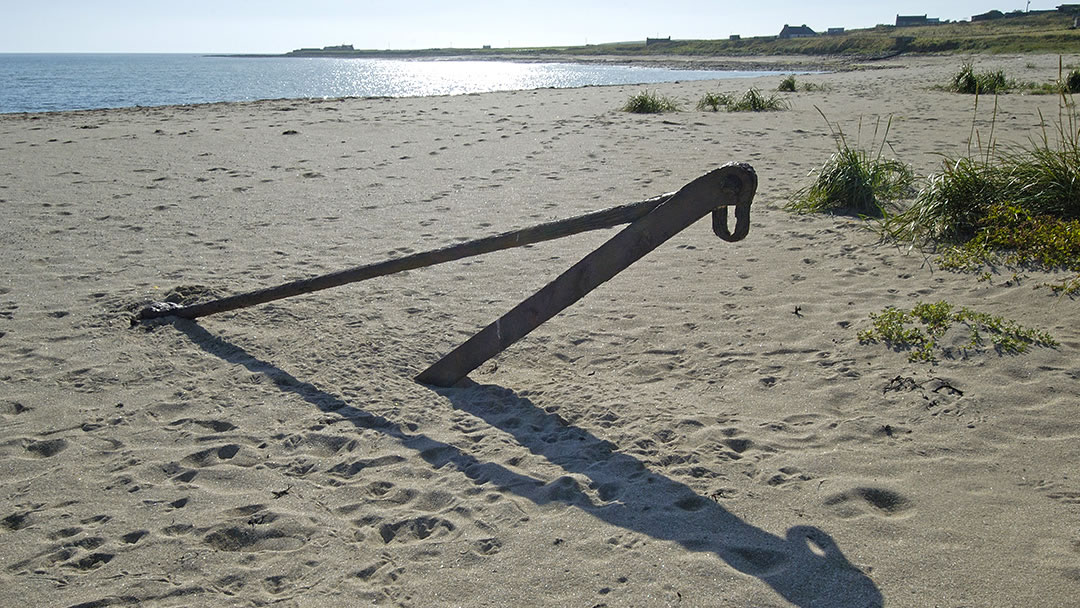
World War 2 Block Ships
- Carolina Thorden was built in Sweden and registered in Helsinki. It was bombed in the waters near the Faroe Islands and it was towed by the Admiralty to Scapa Flow where it was sunk on 28th March 1942 to replace the Gondolier. There is no evidence of it still being at the water sound causeway, so there is speculation that it was salvaged, raised and sold.
- Carron (pictured above) was built in Dundee in 1894 and registered in Grangemouth. It sunk on 3rd March 1940. It was the most northern of the block ships at Barrier IV. Like many of the other ships, it was salvaged by Metal Industries when work started on the barrier; the remains are now covered by sand apart from the lower steel mast, which sticks out from the sand.
- Collingdoc was built in Hill-on-Tees, Ontario in 1925 and it was sunk on 28th March 1942. It was acquired by the British admiralty at the same time as the Soriano. It was partly scrapped by Metal Industries.
- Gondolier was built in Glasgow in 1866 and it was sunk on 21st March 1940. It acted as a passenger ferry for Caledonian MacBrayne on the Caledonian Canal for 70+ years before being taken by the British admiralty in 1939. Its engines, boiler, sponsons, paddle-boxes and sloons were removed in Inverness before it was towed to Scapa Flow. Unfortunately, it rolled over, drifted off and then sank in deep water during a strong gale. It is now buried in the sand east of Barrier IV.
- Juniata was built in Sunderland in 1918 and registered in London. It was sunk on 17th April 1940. No remains of the Juniata have been found so it is unknown if it had been salvaged or buried under the sand.
- The Nadja was a concrete barge, formerly owned by James Anderson of Stromness. It was sunk to the north of Clio I on 26th February 1939. There are no remains of this barge so it is thought to have been salvaged and scrapped.
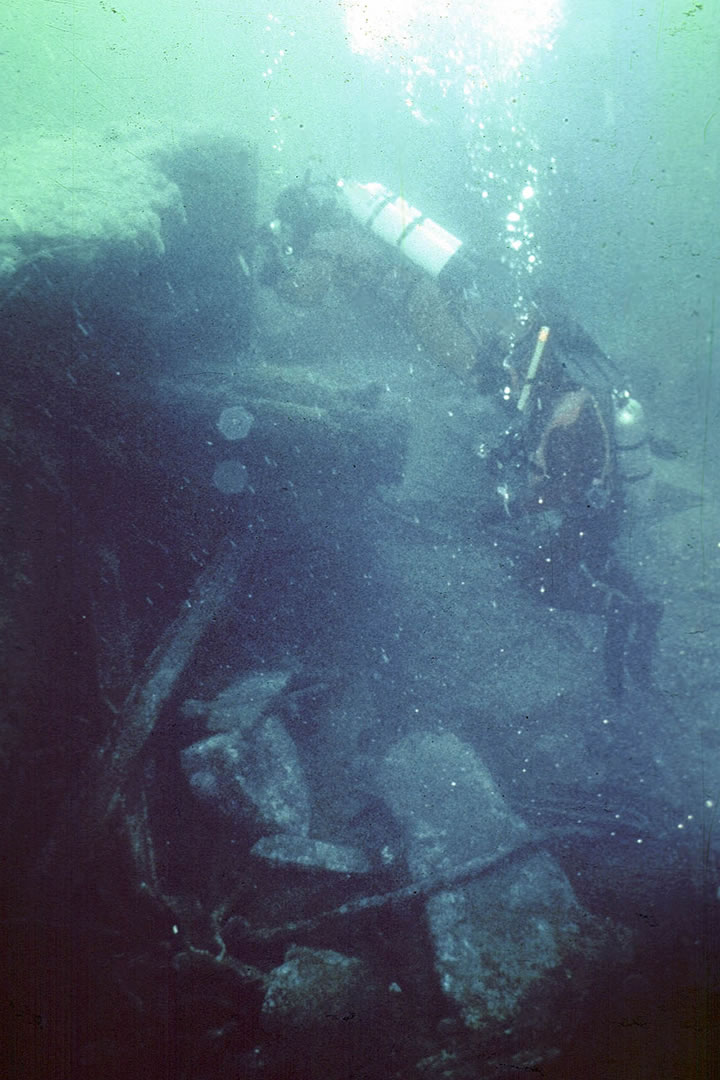
Blockship Barrier 5
It was deemed to be too expensive to build a fifth Churchill Barrier to bridge the gap between the islands of Graemsay and Hoy. So the British Navy stuck with using block ships for this area.
World War 1 Block ships
- Budrie was built in Glasgow in 1882 and it was registered in Bombay. Sunk on 3rd October 1915. It was concrete ballasted so it managed to stay in position. Eventually, it collapsed and some of the ship was swept to sea. The Inverlaine ship was sunk on top of the Budrie, and some parts of it are still under the hull of the remains of the Inverlaine to this day.
- Doyle was a single screw coastal steamer vessel build in Troon, Ayrshire. It was requisitioned by the Admiralty and sunk on 7th October 1914. When sinking the ship, engineers didn’t measure for the speed of the tide changes so, since the ship was unballasted when it started to sink, it drifted off station into the interior of Burra sound; it was deemed useless as a block ship. People say it is one of the better dives in Scapa Flow. It is recognisable by the intact curved bows and stern.
- Gobernador Boreis was built in west Hartlepool in 1882. It was used as a whaling ship and cargo steamer in Chile, Argentina and the Falklands; it was left abandoned for several years before the British Admiralty acquired it and had it towed to Scapa Flow. The sinking of this ship on the 12th of October 1914 was another costly naval mistake; it occurred in a very similar fashion to that of the Doyle. It took too long to sink and drifted out to Burra Sound where it then sank to a depth too low to be useful as a block ship. The bows, mid-ships and stern of the ship are still all relatively intact.
- Ronda was built in Sunderland in 1889 and registered in hull; it sunk on 20th August 1915. The navy was more careful with the sinking of this ship, as they didn’t want to repeat the previous mistakes, so it was concrete ballasted for the sinking. After the war had ended, it was deemed to be a navigational hazard for the ships passing through and so it was blown up in 1962.
- Rotherfield was built in west Hartlepool in 1889 and registered in London. It was sunk on 23rd September 1914. The boat eventually collapsed after many years of use and became a navigational hazard, so it was blown up in 1962. The Rotherfield was the most eastern of the block ships in Burra sound.
- Urmstone Grange was built in Belfast in 1894 and registered in London. It was the first of the block ships to be sunk in Burra sound, on 22nd September 1914. It had quietly collapsed over the years, becoming a navigational hazard to all shipping. It was blown apart in 1962, like the other ships.
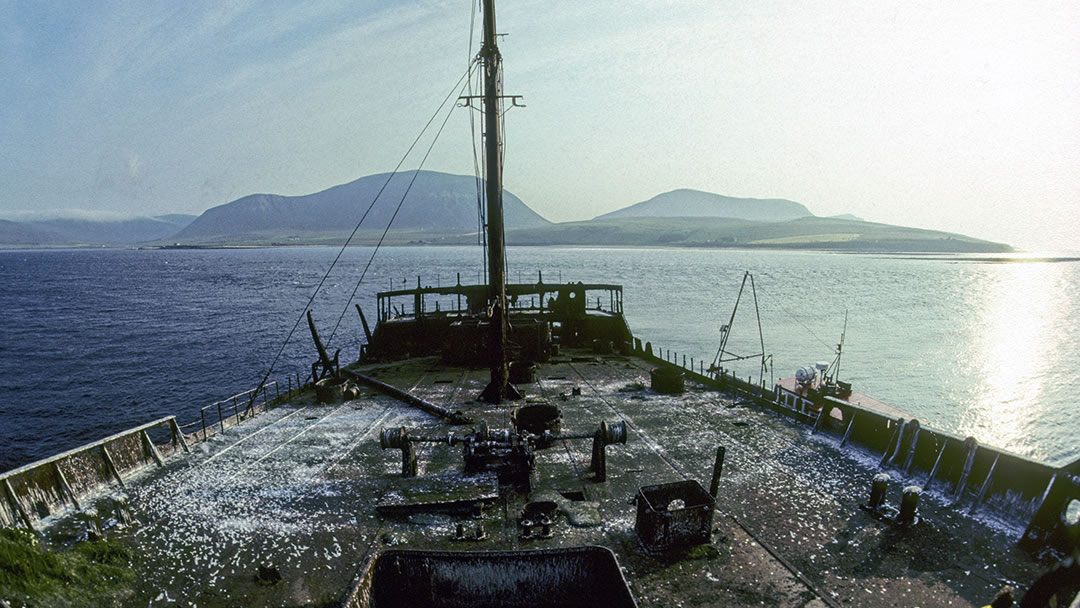
World War 2 Block ships
- The Inverlane (pictured above) was built in Vegesack, Germany and registered in Dublin. It was one of seven ships owned by the Inver Tanker Company. It was mined in the North Sea and its stern was removed and attached to a ship which was under construction at the time. The Inverlane was lost off South Shields in 1939. The forward section of the ship was sealed and towed to Burra sound. It was sunk on top of the Budrie on the 30th of May 1944, between the islands of Hoy and Gramesay. Visible above the waves until very recently, the Inverlane is now broken, with only the smallest part of the bow showing above water on a very low tide.
- Tabarka was built in Rotterdam in 1909 and seized by the British admiralty off Falmouth in 1940. It originally sunk on Barrier I on 23rd march 1941. After the construction of the Churchill Barriers, the Tabarka was refloated and moved to Burra Sound for it to sink again as a block ship because this area was now the only major entrance which incoming enemy ships could access. It was refloated in 1944, moved and sunk on Burra sound on 27th July 1944. Unfortunately, the sinking process failed and the ship drifted into the sound before sinking near the Inverlane. The ship is now completely upside down and has numerous points of access, making it a favoured wreck for divers.
 By Caleb Bowd
By Caleb BowdBorn and raised in England, Caleb has a real passion for technology and games. He’s a big fan of football, having supported Arsenal for his whole life.
Pin it!
